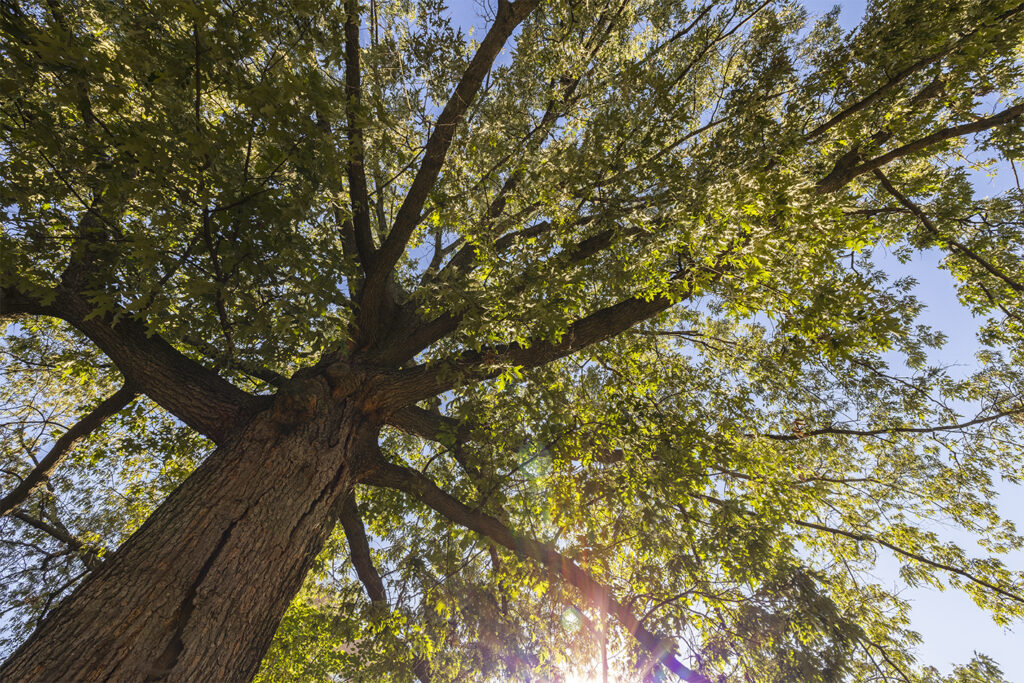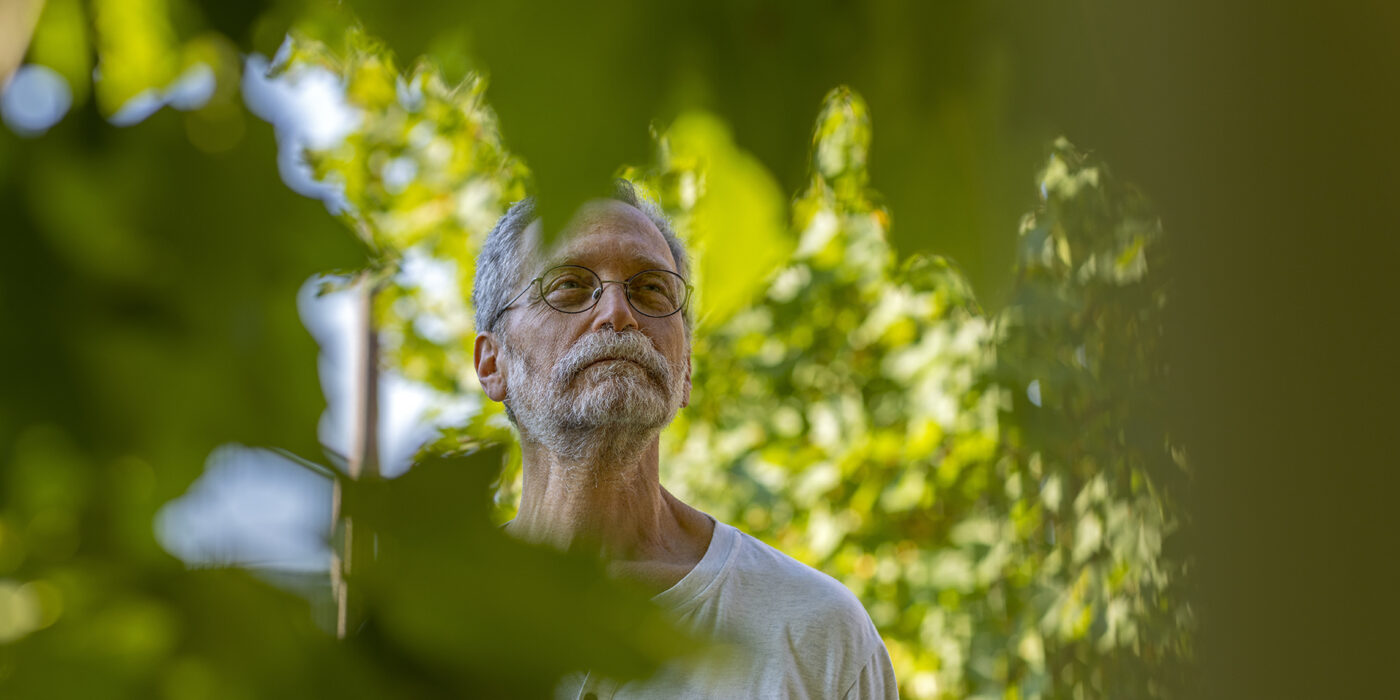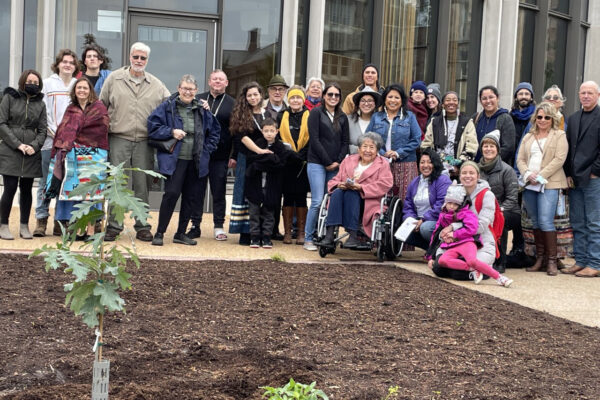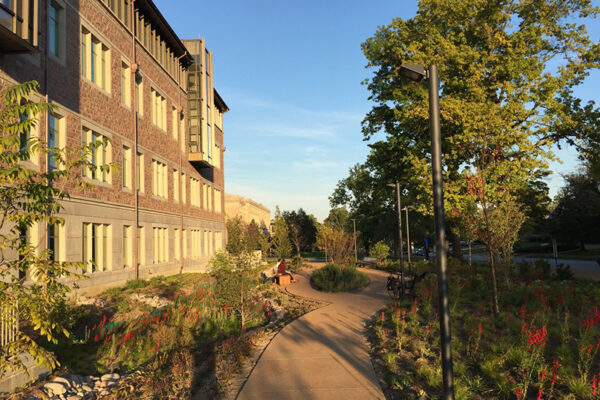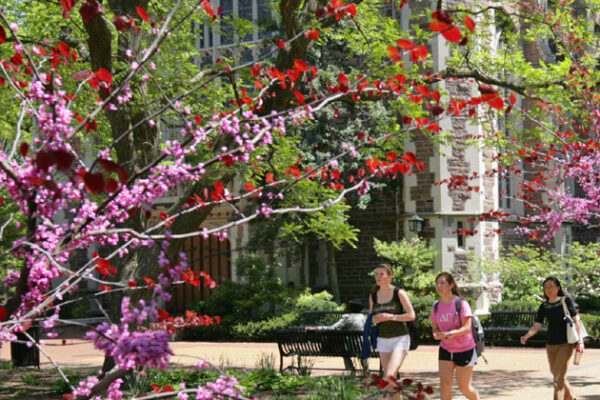If you were to walk around the Danforth Campus and ask any student the name of the iconic Washington University chapel, says Stan Braude, curator of the WashU arboretum, “chances are there’s not a single student who wouldn’t know the name Graham Chapel. My goal is similar: Three years from now, I propose that everyone on campus will know that we’re an arboretum, and everyone will have a favorite tree.”
Few are as qualified to achieve this goal as Braude, professor of practice in biology in Arts & Sciences, who has sparked the arboreal passions of hundreds of WashU students with his “Woody Plants of Missouri” course. Its success, he says, would be impossible without the incredible wealth of trees in the arboretum: “On campus we already have probably 75% of the native species that grow in Missouri, and within three years, we should have 100%.”
An arboretum is a bit like a living museum of trees. WashU’s campus has over 200 distinct tree species and more than 4,000 individual, registered specimens. It was awarded Tree Campus USA status by the Arbor Day Foundation and Level 2 accreditation by the ArbNet Arboretum Accreditation Program.
“Philosophically, the arboretum is under the same category as zoos and aquaria,” Braude explains. “Originally, they were all for entertainment, but nowadays they share the same three missions as a university: education, research and service to the public.” In his new role, Braude will oversee these aspects of the arboretum, along with tree selection.
Tree health and maintenance, however, remain under the purview of Chris Anderson, grounds and landscape design manager and horticulturist, and Cody Azotea, account manager at Focal Pointe Outdoor Solutions, who champions sustainable landscape planning, design and implementation for WashU. “Those two together have done more for the arboretum than I could ever hope to,” Braude says. “Those guys are truly like the Lorax, who cares for the trees in the book by Dr. Seuss.”
It is not an easy task. Unlike most arboretums, which are maintained in forested settings, the WashU arboretum is thoroughly urban. But with the challenges that come from this setting come unique research opportunities, Braude says. “From the beginning, we’ve been monitoring the growth of these trees, and we will be creating a database on their growth in an urban setting. This will be useful information for landscape architects planning to plant trees in comparable urban environs.”
This database also will serve as a useful resource for ongoing research into some of the less obvious effects of climate change. “One of the underappreciated problems of climate change is that species might no longer be in sync,” Braude says. If bees start to appear earlier in spring, for instance, they might miss later-blooming flowers, which might in turn miss out on pollination. The study of comparative species timing (phenology) is another important aspect of the arboretum.
Keeping ahead of the curve on climate change is an important element of the arboretum’s research mission; it will help the university maintain the campus landscape as well. A major focus has been planting “native adaptive” trees that, while not indigenous to the area, do well in the changing St. Louis climate.
A forest planted with the future in mind, WashU’s arboretum will provide shade, education and beauty to the WashU community for many decades to come.
American Linden/Basswood/Tilia americana
This majestic tree located in the northeast corner of Brookings Quadrangle is one of the oldest on campus. Growing happily for over a century, it is coming toward the end of its natural life, yet the arboretum staff is determined to do everything it can to save it: Cables now help the old tree to support its heavy branches. Also of note, several “scion” cuttings have been taken to grow new, genetically identical baby trees. It is a favorite not only among humans but also other lifeforms. The frequent buzzing crowd of bees that inhabit its branches inspired the origin of the colloquial name “basswood.”
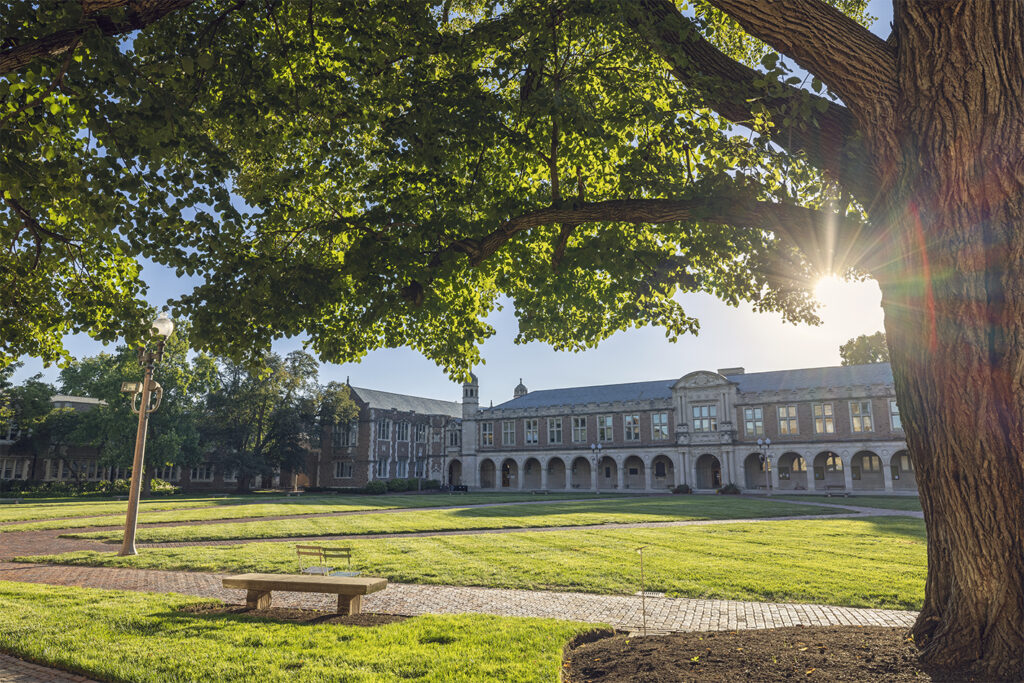
Ginkgo/Ginkgo biloba
The iconic “Ginkgo Allée,” planted in 1927, is a controversial tree feature on campus: While the trees’ vivid yellow fall leaves create one of the most stunning views on campus, their smelly fruit is less pleasing to the senses. Odors aside, the trees’ elegant triangular leaves and unique branch shape indicate their status as “living fossils” — the last of an evolutionary lineage of trees that dominated in the time of the dinosaurs.
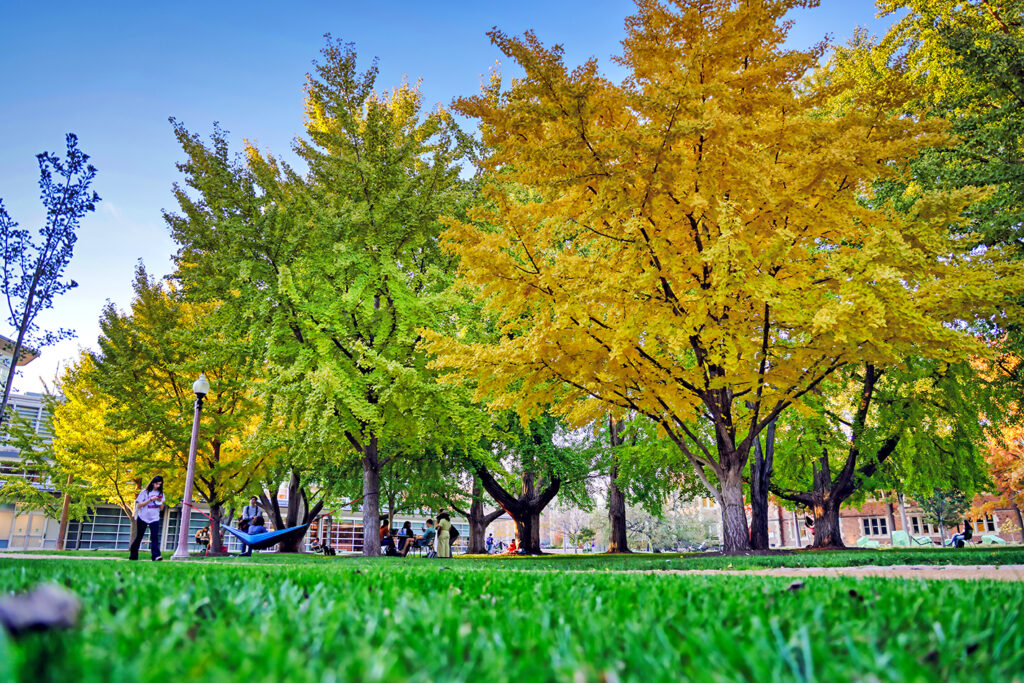
Ashe’s Magnolia/Magnolia ashei
One of the rarest magnolia species in the country, this Florida native is one of the five species of broadleaf magnolia on the east side of Rudolph Hall. The grove includes all the species of broadleaf magnolias able to grow in our region, a collection unparalleled in Missouri and a major contributor to campus tree diversity.
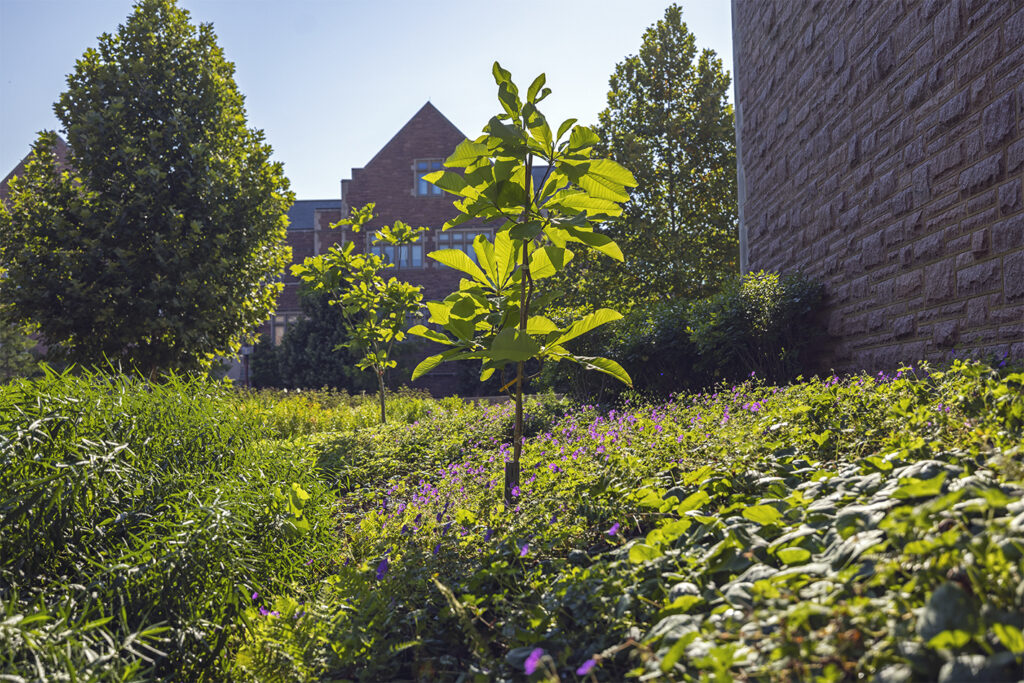
Pathfinder Tree/Quercus alba
The white oak outside Hillman Hall was propagated from a famous Illinois “trail marker tree,” a tree purposefully bent over many years by native peoples to point to a specific resource. It was planted last year in a ceremony hosted by the Brown School’s Kathryn M. Buder Center for American Indian Studies. The Buder Center is engaging with local Native American community members and even Native Nations with ties to the St. Louis region for their thoughts on possibly bending the tree in the future.
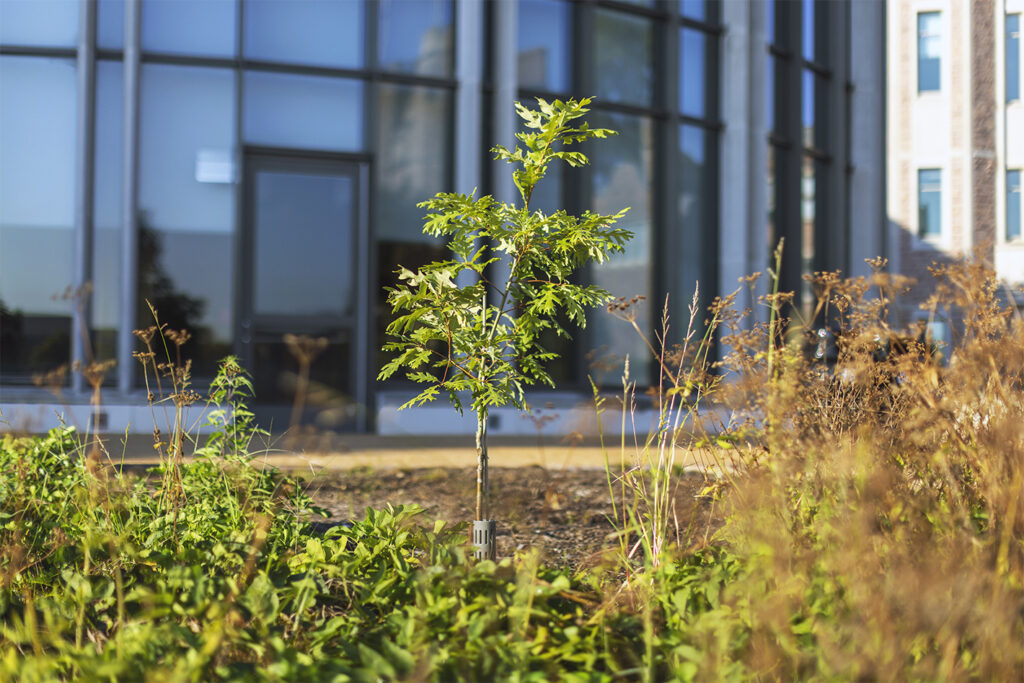
Japanese Crabapple/Malus floribunda
The cascading blooms of the crabapple tree east of Olin Library and south of Cupples II are almost as iconic as the spring cherry blossoms that pepper campus in April and May. But beauty isn’t easy; that’s why campus arborists have dubbed the crabapple a “diva tree.” Whether it needs extra watering, extra fertilizer or treatment for illness, the crabapple constantly depends on its human caretakers.
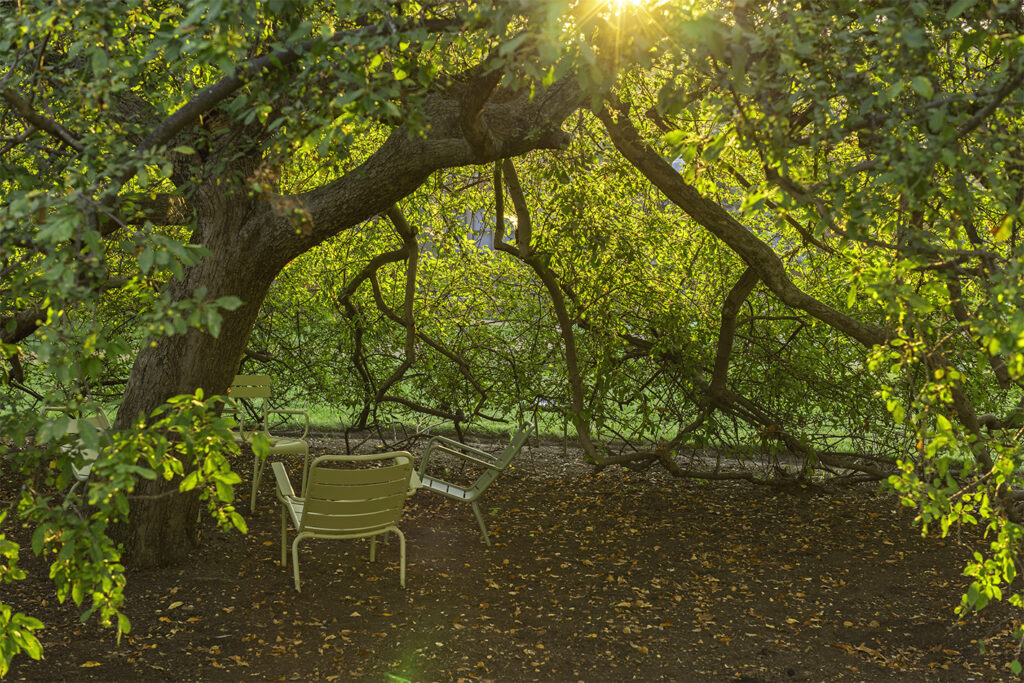
Southern Red Oak/Quercus falcata
While it is maintained by campus arborists, the red oak on the South 40, just north of the Student Mail Services building, was around before any buildings were developed. The tree provides habitat to insects and birds, its surrounding rain garden provides drainage, and its respiration produces immense quantities of oxygen. It is a shining example of trees’ health benefits to humans and the environment, and adds a slice of native biodiversity to the area.
